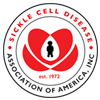Trusted Resources: Evidence & Education
Scientific literature and patient education texts
Opioid management strategy decreases admissions in high-utilizing adults with sickle cell disease
source: Journal of Opioid Management
year: 2017
authors: Mager A, Pelot K, Koch K, Miller L, Hubler C, Ndifor A, Coan C, Leonard C, Field JJ
summary/abstract:Background:
A subset of adults with sickle cell disease (scd) heavily utilizes the emergency department (ed) and hospital. The objective of our study was to determine the efficacy of a multidisciplinary strategy to address unmet needs in highly utilizing adults with scd.
Methods:
In a prospective study, adults with scd with ≥10 admissions per year were assessed by a multidisciplinary team for gaps in medical, social, and psychological care. Thereafter, the team decided upon the subject’s predominant domain that drove admissions and instituted an interventional plan. All plans included an opioid management strategy. Preintervention and postintervention admission rate, as well as opioid use, was compared.
Results:
Twelve subjects were enrolled. Median rate of ed and hospital admissions preintervention was 25 per year. The predominant domains identified were social needs (n = 6), psychological disorder (n = 1), and substance use disorder (n = 5). Multifaceted interventional plans were developed to address a wide range of gaps in care, but an opioid management strategy was the only intervention successfully completed. Even so, when the preintervention versus postintervention admission rate was compared, regardless of the domain, there was a 40 percent decline in hospital admissions (p = 0.03). Consistent with the successful implementation of an opioid management plan, the decrease in admissions was accompanied by a 37 percent decrease in intravenous opioid use (p = 0.02) and 10 percent decrease in oral opioid use (p = 0.04).
Conclusion:
An opioid management strategy, as part of a larger effort to improve care for high-utilizing adults with scd, decreased rate of admissions and opioid use.
DOI: 10.5055/jom.2017.0382
read more
Related Content
-
Your Healthcare TeamTo seek clinical care for your sickle ce...
-
Marijuana use common in sickle cell patients, highlighting need for more research, study showsMany sickle cell disease (SCD)...
-
SCDAA And MedicAlert Pilot Program ApplicationSCDAA and MedicAlert Pilot Program Impr...
-
The Experience and Health-Related Quality of Life After Haploidentical Stem Cell Transplantation for Adults With Sic...Haploidentical hematopoietic stem cell t...
-
Jennifer Yu, MDDr. Jennifer Yu is a pediatric hematolog...
-
BCL11A-based gene therapy for sickle cell disease passes key preclinical testA precision-engineered gene therapy viru...
-
Hydroxyurea improves lung function in children with sickle cell diseaseFor the first time, researchers were abl...
To improve your experience on this site, we use cookies. This includes cookies essential for the basic functioning of our website, cookies for analytics purposes, and cookies enabling us to personalize site content. By clicking on 'Accept' or any content on this site, you agree that cookies can be placed. You may adjust your browser's cookie settings to suit your preferences. More Information
The cookie settings on this website are set to "allow cookies" to give you the best browsing experience possible. If you continue to use this website without changing your cookie settings or you click "Accept" below then you are consenting to this.




 +myBinder
+myBinder
